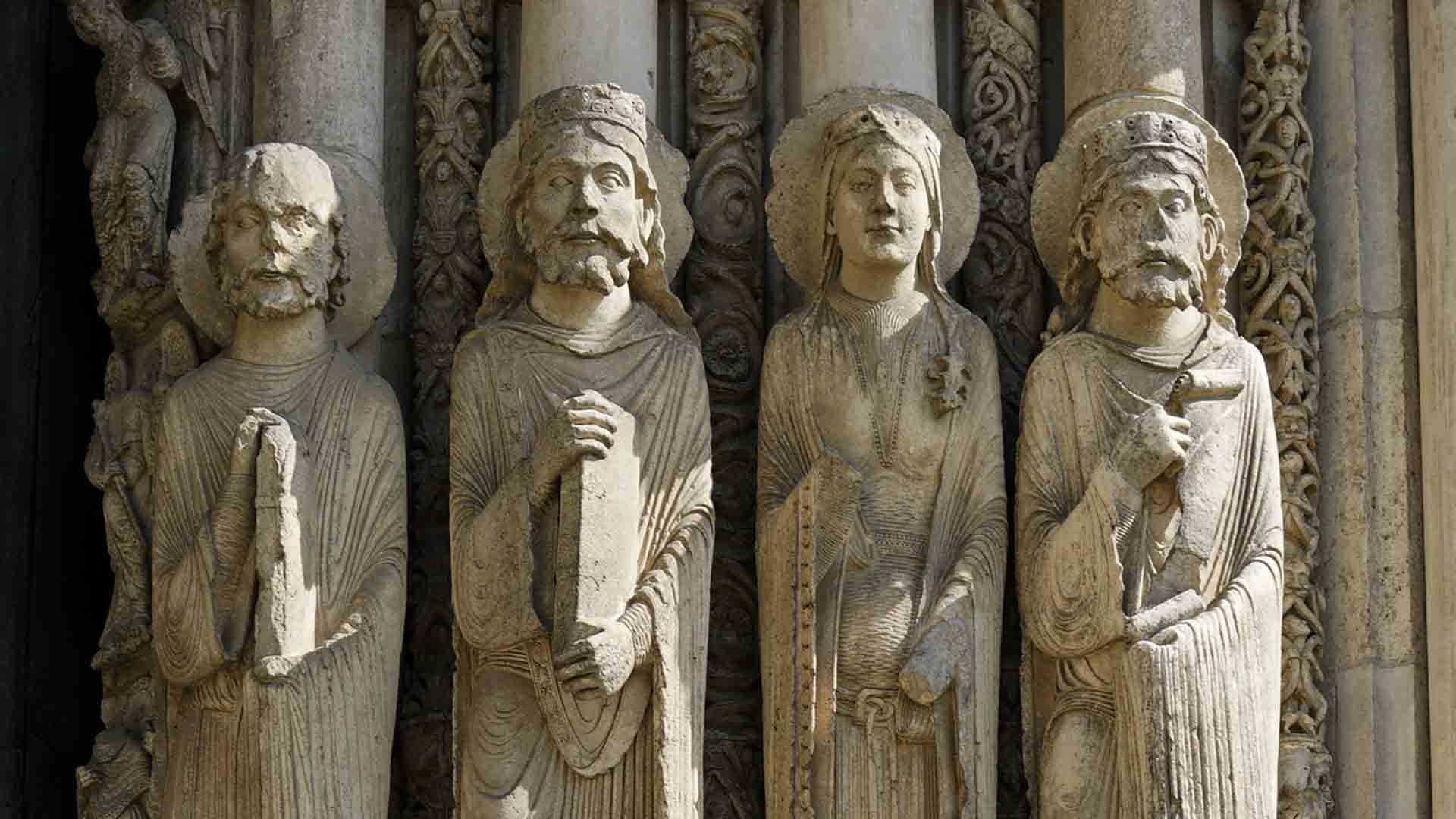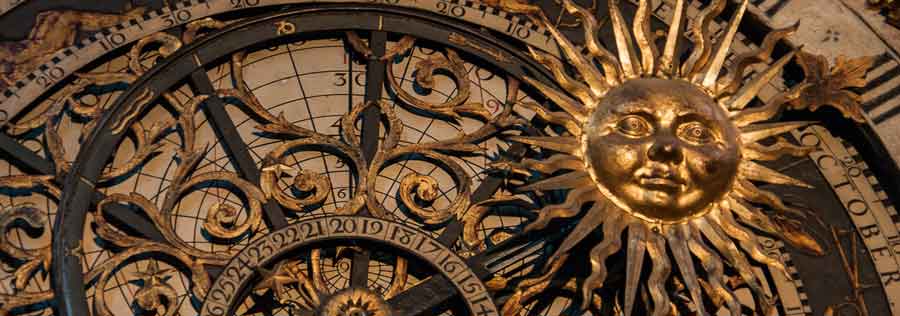

See highlights and high-quality resources for advanced investigations.
Middle Ages (c. 330 – 1453 C.E.) is the period in European history from the collapse of Roman civilization in the 5th century CE (Common Era) to the period of the Renaissance (variously interpreted as beginning in the 13th, 14th, or 15th century, depending on the region of Europe and on other factors). Con't... Encyclopedia Britannica │ Wikipedia
It had taken many lifetimes and countless battles
to conquer and maintain the vast regions of the Roman Empire.
When Emperor Theodosius the first took power,
he ruled over lands that stretched from Portugal to Palestine.
The question of succession of power
had always been a problem in the Empire and
for Theodosius it came down to a choice beetwen two sons.
Or did it?
In 395 AD, Theodosius, instead, split the Empire in half.
The Western half became domain of his son Honorius
We call it the 'Western Roman Empire'.
The Eastern half was awarded to his son Arcadius
and became known as the Byzantine Empire.
The two kingdoms both considered themselves Roman,
though they spoke Latin in the West and Greek in the East...
...The church was the major patron of the art
and so most medieval art had reliogious themes
Western artists of the later middle ages
were interested in visionary experiences.
Over time, in the search to create more convincing and powerful images.
Their art became more realistic
in its patrial of people and natural world.Con't...
Transcripts
Gentle Reminder: The context of art; the historical, religious, or environmental information that surrounds the work helps in understanding its meaning; content, message or narrative expressed by the subject matter.
Byzantine art, architecture, paintings and other visual arts produced in the Middle Ages in the Byzantine Empire (centered at Constantinople) and in various areas that came under its influence. The pictorial and architectural styles that characterized Byzantine art, first codified in the 6th century, persisted with remarkable homogeneity within the empire until its final dissolution with the capture of Constantinople by the Turks in 1453. Con't... Britannica │ Khan Academy: A beginner's guide to Byzantine Art │ Smarthistory Examples │ Wikipedia
Video: San Vitale, Ravenna is one of the most important surviving examples of Byzantine architecture and mosaic work. It began in 526 or 527 under Ostrogothic rule. It was consecrated in 547 and completed soon after. —Smarthistory │ Wikipedia
The architecture of the Byzantine Empire (4th - 15th century CE) continued its early Roman traditions but architects also added new structures to their already formidable repertoire, notably improved fortification walls and domed churches. There was, as well, a much greater concern for the interiors of buildings rather than their exteriors. Christianity influenced developments such as the conversion of the secular basilica into a magnificent church with an impressive domed ceiling. Byzantine buildings, in general, continued to employ the Classical orders but became more eclectic and irregular, perhaps originally because old pagan buildings were used as quarries to provide eclectic stone pieces for new structures. This emphasis on function over form is a particular aspect of Byzantine architecture, which blended influences from the Near East with the rich Roman and Greek architectural heritage. Byzantine architecture would go on to influence Orthodox Christian architecture and so is still seen today in churches worldwide. Con't... Ancient History Encyclopedia │ Wikipedia
More medieval books survive from the Middle Ages than any other artistic medium. c. 330 - 1300 C.E. Recording and disseminating information is quick and easy today, but in the Middle Ages this process was slow and laborious. Monastic libraries housed most books and all books were copied by hand, usually by monks. This process of copying and disseminating books was essential to the preservation of knowledge. —Smarthistory
A beginner’s guide to books in medieval Europe │ The work of the scribe │ Google Arts & Culture: Illuminating the Middle Ages
Making Manuscripts │ An illuminated manuscript is a book written and decorated completely by hand. Illuminated manuscripts were among the most precious objects produced in the Middle Ages and the early Renaissance, primarily in monasteries and courts. Society's rulers—emperors, kings, dukes, cardinals, and bishops— commissioned the most splendid manuscripts. —Getty Museum
A Medieval textbook │ Dr. Erik Kwakkel and Dr. Beth Harris look at a medieval textbook: Boethius, De institutione arithmetica, c. 1100 (National Library of the Netherlands, The Hague, MS 78 E 59). With special thanks to Ed van der Vlist, Curator of Medieval Manuscripts, Koninklijke Bibliotheek, National Library of the Netherlands. —Smarthistory
Video: The Book of Kells (Trailer) │ The Book of Kells revels in the glory of the four gospels. The harmony of the four is the artistic centre of this great work. The documentary takes the four cherubim of living creatures of the bible, revealing how these great gospel symbols of the Eastern Church, the lion, calf, man and eagle were transformed by the art of native Celtic artists. —Beckmann Visual Publishing │ Wikipedia: Book of Kells
The Book That Changed the World │ By introducing printing with moveable metal type to Western Europe, Johann Gutenberg revolutionized books, and, in fact, the very nature of communication. Text, once scarce and complicated to produce, was now easily created in multiples that were readily distributed. Out of the explosion of text enabled by moveable type came the Renaissance, the Reformation and the Scientific Revolution. The Bible, too, became a transformed document. —Library of Congress │ Wikipedia
The Gutenberg Press │ It’s estimated there were about 30,000 books in all of Europe before Gutenberg’s press. Less than fifty years later there were as many as twelve million books, and the book that was printed was often the Bible. As people became more interested in studying the Bible, Bibles were printed not only in Latin, but in German, French, and even ancient Greek. Many believe that without the Gutenberg press, the Protestant Reformation of the sixteenth century might not have been possible. —Museum of the Bible
Video: Romanesque vs. Gothic Architecture │
As medieval Europe emerged
from the fighting and turmoil
of the Dark Ages
(a period of widespread unrest and invasion
that lasted from roughly 500 - 800 AD),
two major styles of architecture developed:
Romanesque and Gothic.
Let's look at their backgrounds and
distinguishing traits and then explore how they differ.
—Study.com
Video: Speyer Cathedral │
a basilica with four towers and two domes,
was founded by Conrad II in 1030 and
remodelled at the end of the 11th century.
It is one of the most important
Romanesque monuments from the
time of the Holy Roman Empire.
The cathedral was the burial place
of the German emperors for almost 300 years.
—Unesco │
Romanesque Examples
Video: Chartres Cathedral │ Intro and video cover detail of the central portal jamb figures right) of the Chartres Cathedral, (Notre Dame de Chartres), c. 1145 and 1194 - c. 1220. by Steven Zucker at —Smarthistory │ Gothic Examples
Stained Glass │ in the arts, the coloured glass used for making decorative windows and other objects through which light passes. Strictly speaking, all coloured glass is “stained,” or coloured by the addition of various metallic oxides while it is in a molten state; nevertheless, the term stained glass has come to refer primarily to the glass employed in making ornamental or pictorial windows. The singular colour harmonies of the stained-glass window are due less to any special glass-colouring technique itself, however, than to the exploitation of certain properties of transmitted light and the light-adaptive behaviour of human vision. —Encyclopesia Britannica
Metropolitan Museum │ Google Arts & Culture │ Wikipedia
Video: Stained Glass Restoration: How It's Made
Video: The conservator's eye: a stained glass Adoration of the Magi │
Circle of Peter Hemmel von Andlau
(Strassburger Werkstattgemeinschaft),
Adoration of the Magi,
1507 or earlier (Munich),
pot metal and colorless glass,
vitreous paint, and silver stain,
72.4 x 45.7 x 1 cm (The Cloisters,
The Metropolitan Museum of Art)
—Smarthistory
Repoussé │ method of decorating metals
in which parts of the design are raised in relief
from the back or the inside of the article
by means of hammers and punches;
definition and detail can then be
added from the front by chasing or engraving.
The name repoussé is derived from the French pousser,
“to push forward.”
This ancient technique, which has been used
extensively throughout the history of metalworking,
achieved widespread popularity in Europe during the
16th, 17th, and 18th centuries.
—Encyclopedia Britannica
Video: Saints and Heroes: Art of Medieval and Renaissance Europe │
Step back in time and
immerse yourself in the spiritual,
domestic, and chivalric worlds of the
Middle Ages and Renaissance.
—The Art Institute of Chicago
p c1 text..
p c1 text..

Below, is a small sample of
information links
coordinated with
video playlists.
Each link and video thumbnail takes you to the category on the Resource page.
Once there, activate the links.
Resources
Creative Commons Public Domain
0 1.0 Universal 0 1.0) License